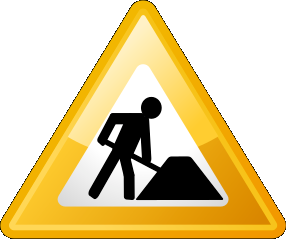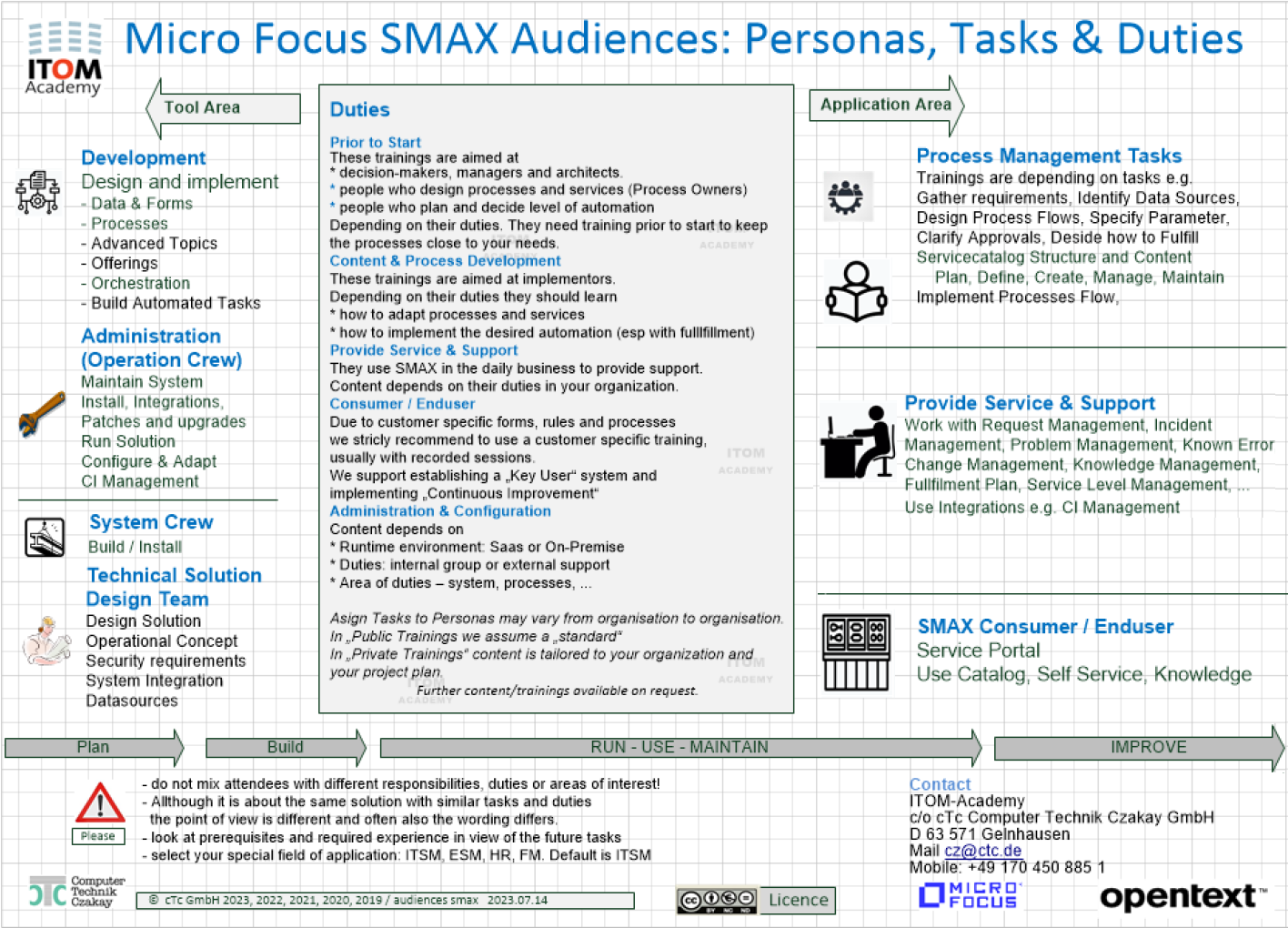
Service Manager (SM)
Service Manager SM is one of OpenText's tools for IT Service Management (ITSM).
This page is currently under construction!
Roles
With properly trained staff the OpenText tools increase your benefits in daily business.
Fast changing requirements demand properly trained staff for optimal benefits.
Over the lifecycle we recommend to adjust to at least these phases:
So we describe the important groups of people for training audiences using theseRoles.
Fast changing requirements demand properly trained staff for optimal benefits.
Over the lifecycle we recommend to adjust to at least these phases:
- planning/design of the whole system
- implementation of system
- design and implement processes
- maintening tools and applications
- continuous improvement
So we describe the important groups of people for training audiences using these
Roles
Decision Maker: You decide on the investment in Service Management and want to know
concepts and consequences of using product/suite, benefits of usage, and changes ahead.
Solution Architect: You design the solution and want to know the concepts and consequences of
the suite/products, the benefits of usage, and the changes ahead, the technical and organizational boundaries.
Project Manager: You plan and manage the implementation of the solution and want to know the
concepts and consequences of the suite/products, the technical and organizational needs, and some traps.
Technical Manager: You manage the implementation of the solution and want to know the
concepts and consequences of the suite/products, the technical and organizational needs, omit
common traps, and understand some important technical details.
Administrator: You administer the solution and want to know the concepts and integrations of the
suite/products, common traps, and need to understand the technical details.
Operation Crew: You run/operate the solution and want to know the tools and integrations of the
suite/products, and learn how to choose and use the proper tools for your daily tasks and duties.
Developer: You implement and adapt the solution and want to know the concepts and consequences
of the suite/products, the APIs, omit traps, and understand the development details.
Process Owner, Process Designer: You design and tailor the workflows of the solution and want
to know the concepts and consequences of the suite/products, the technical needs, omit traps, and
understand the design details.
Service Engineer / Service Agent / Service Supporter: You are using the suite/products to help
you do your daily work, and need to be able to make the best use of the tools to accomplish that.
Senior Service Engineer / Senior Agent / Senior Service Supporter: You are experienced in
using this tool. You detect opportunities for continuous improvements and transfer these result to developer team.
You teach your team with new functions and introduce new colleagues.
User / Key User You use this solution for daily business
Task and Duties
To explain the different groups, tasks & duties, and points in time, click the triangle to show a visualization:

On the bootom you see the timeline from "Plan" over "Build" and "Run-Use-Maintain" to "Improve".
On the left hand side ("Tool Area") you find the groups/teams responsible for the tasks & duites of "Development", "Administration(Operations Crew)", "System Crew", and "Technical Solution Design Team".
On the right hand side ("Application Area") you find the groups/teams responsible for the tasks & duties of "Process Management Tasks", "Provide Service & Support" and the "Consumers/End Users".
In the center you see the list of duties over time.
Timeline
The timing arrangement is determined by the project and duties.
- Managers should be trained prior to the start of the project so that the capabilities of the SMAX Suite are fully utilized and the staffing requirements are in place to start the project.
- Process Owners should be trained before the design phase so that the concept and the existing "out of the box" offer are known before customer specifications are created.
- Service Engineers should be trained after the solution is mostly implemented: So that what will be really used is trained in practice.
- Users should absolutely not be trained until the application is nearly completely finished.
- Senior Engineers and Senior Key Users need additional know-how for their task as multipliers. At the beginning and for the introduction of future colleagues they should support the handling of SMAX.
- Administrators should be trained in an early project phase and can then "grow into the project".
News
- The "Summer School 2024" includes a lot of ITSM trainings
 deutsch
deutsch